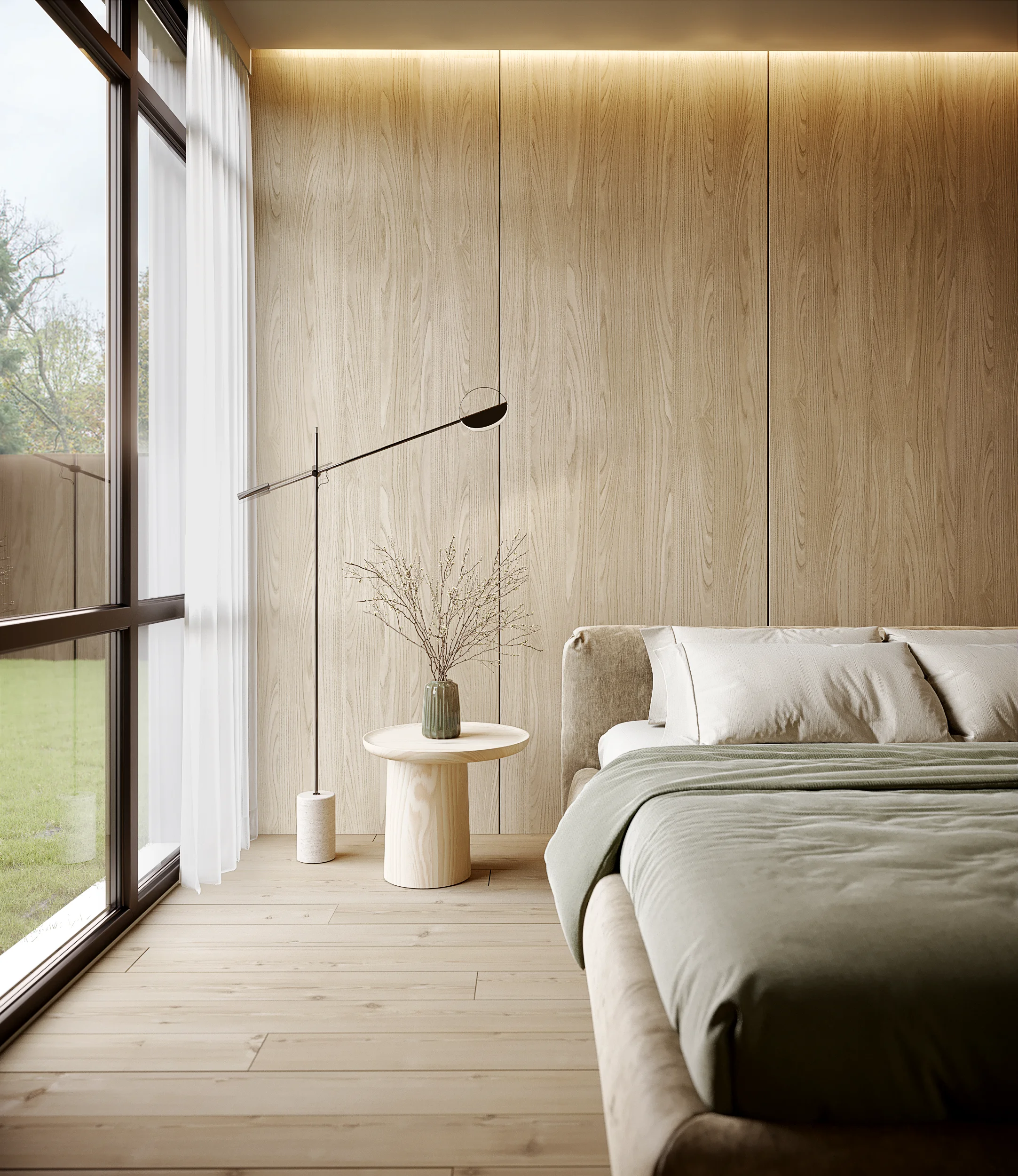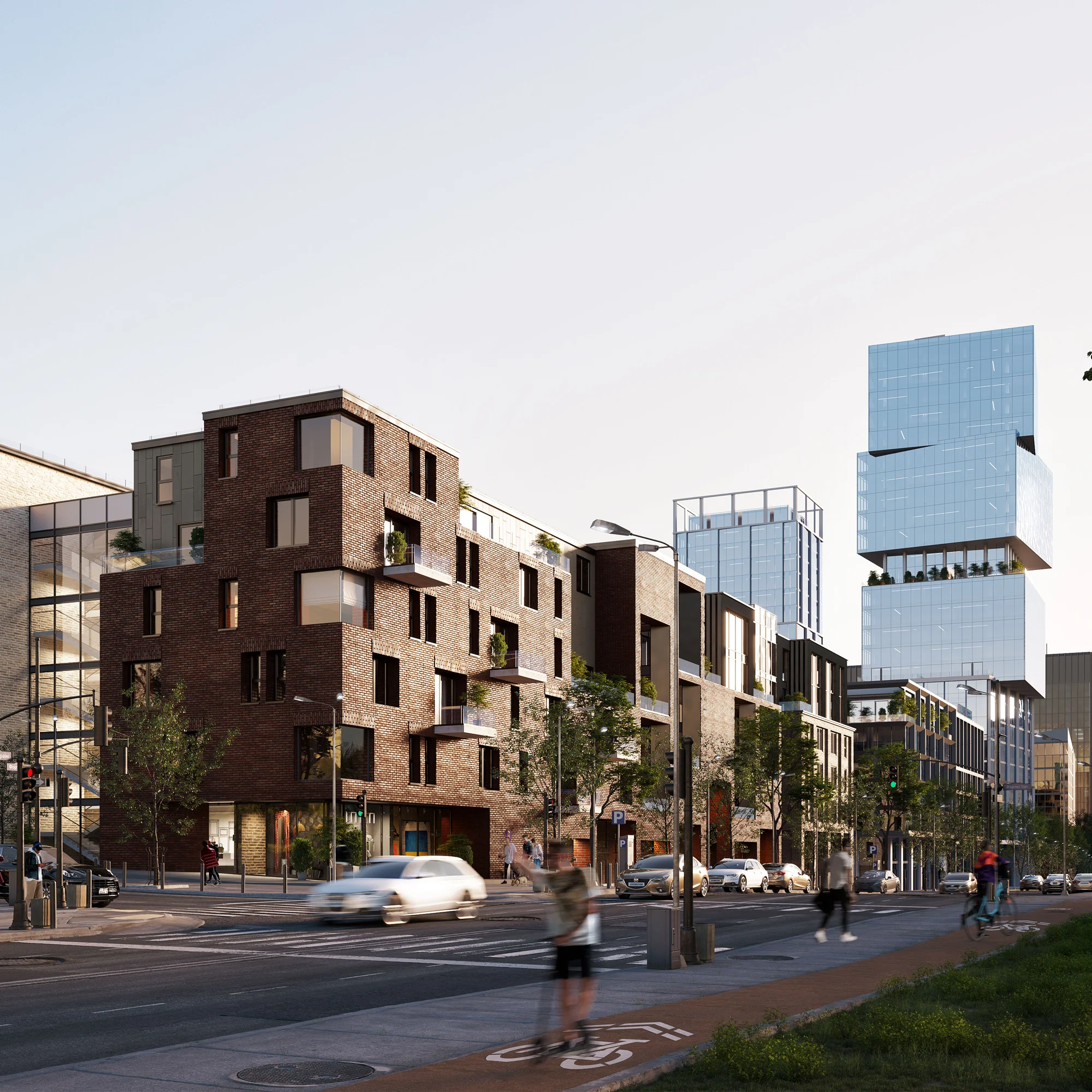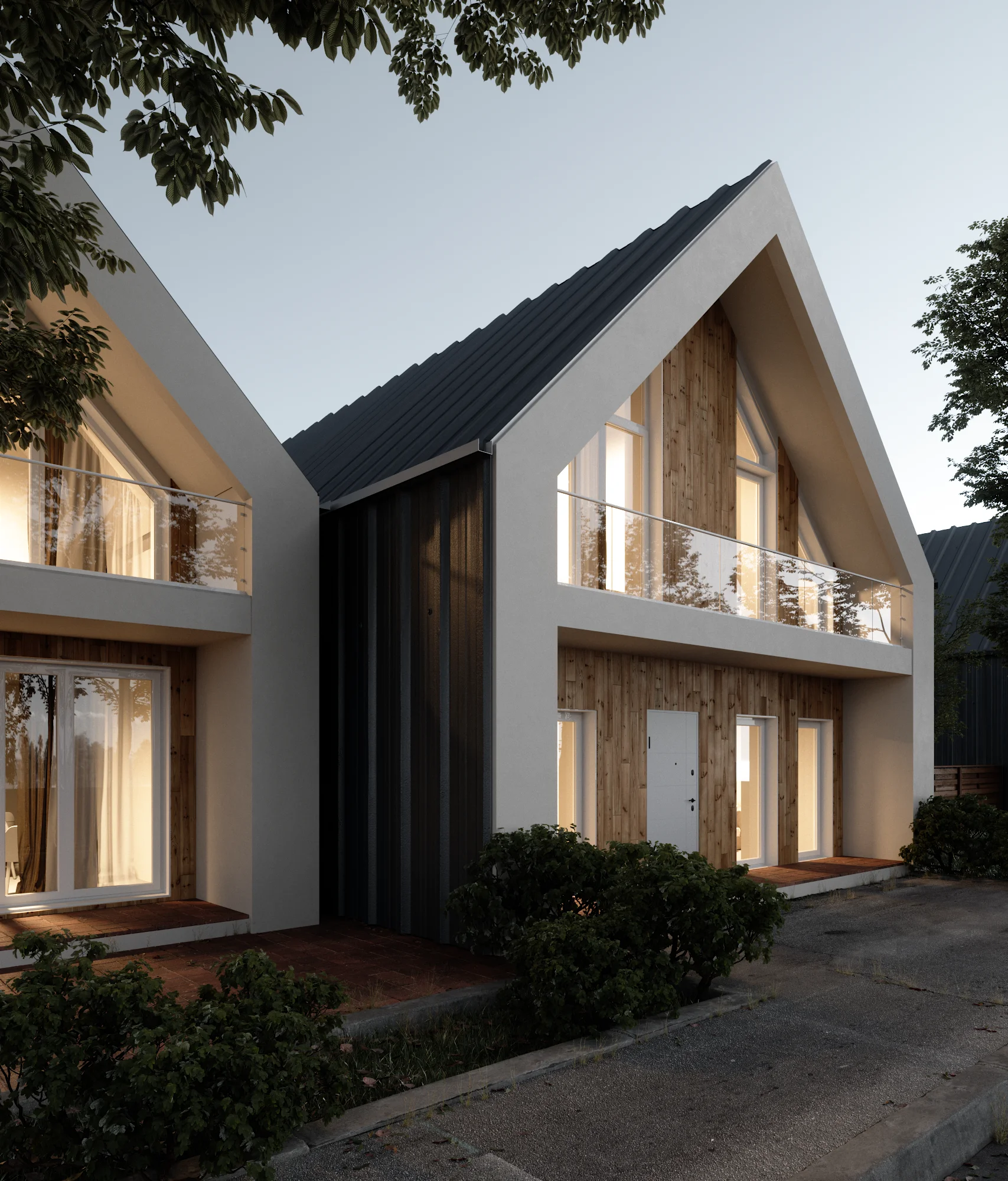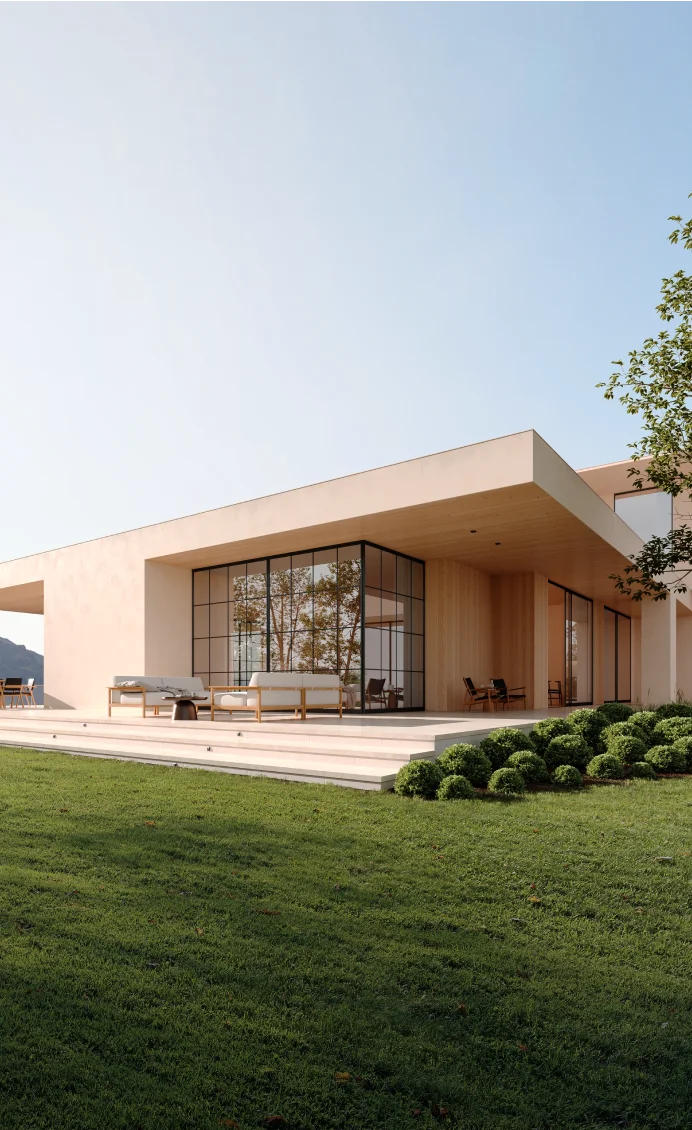In an architectural visualization project, it is crucial that both the architect and the 3D rendering specialist are on the same wavelength to ensure seamless execution and a unified vision of the final result. However, architects can sometimes find the 3D rendering terminology employed by CG artists to be challenging to comprehend. Even though these professionals try to refrain from industry-specific language when conversing with clients, they often find themselves having to rephrase 3D rendering terminology. This can consume considerable time and potentially impede the pace of work.
The importance of understanding the appropriate terminology transcends all spheres of activity, whether it be business, art, or any other endeavor. For the success of your venture, it is critical to comprehend all the relevant terms. This importance is heightened when collaborating with a 3D Rendering artist. A deep understanding of the 3D rendering, 3D render especially in architectural projects where sketches are transformed into three-dimensional models, are crucial. Having a solid grasp of this 3D rendering terminology can streamline operations and optimize your endeavors.
3D Rendering Terminology Made Easy
Grasping the correct terminology is vital in any business undertaking, and as a client, it can be an impressive display of your awareness and interest. Having a basic understanding of the artist’s work helps you stay abreast of the project’s progress.
Before venturing into any business field, it’s important to acquaint yourself with the industry-specific language, even if it’s at a rudimentary level.
The key to effective communication with an artist often lies in understanding the 3D rendering terminology. Interpreting your artist’s language allows for a clearer perspective of the project’s progression, timelines, and assists you in maintaining control over the situation.
Beyond eliminating unnecessary explanations and accelerating the process, a firm grasp of the relevant terms enhances your understanding of the artist’s work. This leads to more efficient communication and provides you an edge during price negotiations.
Unlocking the Power of 3D Rendering in Architectural Visualization
3D rendering is an intricate process used in architecture that transforms a computer-aided design (CAD) model into a photorealistic, three-dimensional image. Using specialized software, a 3D rendering artist can add textures, colors, lighting, and other environmental elements to the model, resulting in a life-like representation of the architectural design.
The significance of 3D rendering in the field of architecture cannot be understated. It enables architects and designers to visualize their concepts and ideas with unprecedented accuracy. This not only facilitates better communication with clients and stakeholders, but also allows for early detection of design issues, saving both time and resources.
The impact of 3D modeling and rendering services in architecture is profound. They have revolutionized the way architects design, enabling them to create, modify, and refine their designs with ease. With the advent of different types of 3D modeling, architects now have the flexibility to choose the most appropriate modeling technique for their specific project, be it parametric, direct, or procedural modeling.
This article aims to delve deeper into the world of 3D rendering and modeling and exploring its role in modern architecture. Stay tuned as we unravel the fascinating world of architectural visualization and its significant contribution to the success of architectural projects.
Basic 3D Rendering Terminology
To truly immerse oneself and explore the captivating realm of 3D rendering and modeling, having a solid grasp of the fundamental terminology is indispensable. These terminologies, with their distinct definitions and applications, are the pillars that hold up the architecture of 3D technology. They serve as guiding markers, leading us through the labyrinth of intricate processes and procedures inherent in this field.
Understanding 3D rendering terminology not only aids in grasping the technicalities but also broadens our comprehension of the intricate work behind the visually appealing 3D outputs. They give us insight into the steps involved in the transformation of simple sketches into detailed, lifelike three-dimensional models. Moreover, this knowledge equips us with the language necessary to communicate effectively with professionals in the field, bridging the gap between conceptual ideas and tangible 3D representations.
From understanding the role of polygons and vertices in creating shapes and figures, to comprehending how rendering engines and real-time rendering contribute to the final output, the lexicon of 3D rendering is extensive and diverse. Each term, carrying its own weight and significance, plays a crucial role in shaping our understanding of the intricate processes involved in 3D rendering and modeling.
Therefore, a strong foundation in these key terms becomes an invaluable tool as one navigates through the various facets of 3D technology, facilitating a deeper appreciation of this revolutionary technology and its enormous potential. Whether you are a professional delving deeper into your field, or an enthusiast with a keen interest in understanding how your favorite 3D visuals come to life, mastering the basic 3D rendering terminology is your first step towards a richer and more fulfilling exploration of the 3D rendering and modeling world.
- Polygon. A polygon in 3D modeling refers to the flat, two-dimensional shape with straight sides used to construct a 3D object’s surface or ‘mesh’. The details in architectural renders depend on the number of polygons used. Higher polygon counts typically result in a smoother surface and more detail.
- Vertex. This is a key point where two or more edges meet to form the corners of a polygon. Vertices define the structure of a polygon and can create sharp edges in modeling objects.
- Edge. An edge is a straight line segment connecting two vertices in a polygon. Edges define the shape and structure of a 3D model.
- Mesh. A mesh is a collection of polygons that form the surface of a 3D model. In the context of low poly modeling, a mesh would consist of a lower number of polygons, resulting in a simpler, less detailed model.
- 3D Modeling. This is the process of developing a mathematical model of a three-dimensional object. The objects can be created manually by manipulating vertices, or automatically using a 3D scanner.
- 3D Scene. A 3D scene is a collection of 3D objects, along with lighting, camera angles, and other settings, set up in a 3D space for rendering.
- Render. This refers to the process of generating a photorealistic 3D image from a 3D scene using a rendering engine. The quality of the CG render is often determined by the render resolution.
- Rendering Engine. This is a software tool that converts a 3D scene into a format that can be viewed as a still image or animation. These engines can produce both real-time rendering and offline building rendering.
- Real-Time Rendering. This is used primarily in gaming and interactive graphics, where images need to be computed from 3D information at an incredibly fast rate.
- Offline Building Rendering. This type of rendering allows for greater detail and quality compared to real-time rendering. It is often used in creating architectural renders and virtual tours, where high levels of detail and accuracy are required.
- Ray-Tracing. This is a technique used to generate an image by tracing the path of light as pixels in an image plane and simulating the effects of its interactions with virtual objects. This can result in highly realistic texture mapping and lighting effects.
By acquiring a comprehensive understanding of 3D modeling terms, one is able to fully acknowledge the intricate complexity involved in the process. In another aspect, the appreciation for the detailed work put into creating photorealistic 3D renderings, whether in low-resolution or high-resolution format, is heightened.
Types of 3D Rendering Software
A key aspect of creating successful 3D renders is the use of powerful 3D rendering software. Different software offers various features and is suited to specific types of projects. The following are some of the most prominent software used in the industry:
- 3DS Max. A professional 3D modeling and rendering software, 3ds Max is popular for its robust toolset that includes character modeling and animation capabilities. It is used widely in GameDev, film visual effects, and architectural visualizations. The software helps in achieving high-resolution outputs, bringing the same vision to the computer screen as in the designer’s mind.
- SketchUp. This is a user-friendly 3D modeling software commonly used in architecture and interior design. SketchUp is appreciated for its intuitive interface and ease of use, making it ideal for creating quick 3D models and architectural renders.
- Revit. Revit is a Building Information Modeling (BIM) software from Autodesk. It’s primarily used by architects and engineers for designing and managing building projects. Revit supports collaborative design, allowing multiple stakeholders to work on the same project simultaneously.
- AutoCAD. Another Autodesk product, AutoCAD is a versatile software used for 2D and 3D CAD (Computer-Aided Design). It is heavily employed in industries like architecture, engineering, and construction for creating detailed drawings.
- Corona Renderer. This is a photorealistic rendering engine plugin known for its ease of use and powerful, high-quality output. The physically based rendering capability of Corona Renderer ensures highly realistic renders, providing a significant boost to any architectural 3D modeling technique used.
- V-Ray. V-Ray is a 3D rendering software that is known for its real-time rendering capability and high resolution. It is used across industries, including architecture, cg animation, and visual effects, for its ability to create highly realistic images and animations.
- Unreal Engine 4. Primarily known as a game engine, Unreal Engine 4 also includes a powerful rendering engine that supports real-time rendering. Its ability to handle complex scenes and physics makes it a favorite among many 3D artists.
Each of these rendering software options offers a unique set of features and capabilities that can enhance the 3D rendering process. The choice of software largely depends on the project requirements, the expertise of the 3D artist, and the desired output quality.
Lighting in 3D Rendering Terminology
Understanding lighting in 3D rendering is crucial as it dramatically impacts how the final model is perceived. It involves the strategic use of light to achieve a realistic or stylized look in a three-dimensional space, ensuring the architectural design is showcased optimally. Here are some key terms associated with lighting in 3D rendering:
- Light Sources. These are entities in a 3D scene that emit light, illuminating the objects around them. The placement of light sources, their intensity, and color can greatly affect the mood and readability of a scene. They can be manipulated to illuminate the scene from different angles. This showcases the 3D graphic for architects in varying perspectives.
- Shadows. Shadows are areas deprived of light due to the obstruction of light rays by an object. They play an important role in communicating the position of objects relative to the light sources and to each other. Shadows add depth and realism to an architectural 3D model.
- Global Illumination. This is a series of algorithms used in 3D computer graphics to simulate both the direct illumination (light directly hitting surfaces) and the indirect lighting (reflected light bouncing off surfaces) in a scene. It provides a more realistic lighting model, capturing the subtle light interplay that occurs in real-world environments. Global illumination is key to achieving high-resolution renders with realistic light and shade dynamics.
- Ambient Occlusion. This is a shading method used in 3D computer graphics to calculate how exposed each point in a scene is to ambient lighting. The idea is to add depth to a 3D scene by darkening enclosed and nearby areas, thus giving a more realistic view of the architectural design.
These elements are integral to the principles of architecture and 3D rendering, playing a substantial role in how the final product is viewed. Effective lighting techniques can enhance the aesthetics of a scene, create depth, and help in better visualization of the project on a computer-aided design. The correct manipulation of light sources, shadows, and the implementation of global illumination and ambient occlusion techniques can contribute to a dynamic, realistic, and captivating render.
Different Types of Visualization
In the world of 3D rendering, different types of visualization techniques are employed to provide a digital representation of architectural designs. Each technique has a unique purpose and offers a specific level of detail, enhancing the design process. Here’s a look at some of the most commonly used types:
- 3D Interior rendering. This technique focuses on creating realistic 3D models of the interior spaces of a building. It involves intricate 3D modeling, usage of displacement maps for textures, and careful placement of ambient light to showcase the details of interior design.
- 3D Exterior rendering. As the name suggests, exterior rendering focuses on creating 3D renders of a building’s exterior. It requires a high level of detail, including the building blocks, ambient occlusion for realistic shadows, and ray tracing for realistic light and reflections.
- 3D Flythrough/3D Walkthrough. These are animated 3D models that simulate movement through a building’s interior or exterior. They provide an interactive presentation of the space, allowing viewers to experience the building as if they were physically there. The process involves creating a 3D model, applying textures, and then animating a path or a ‘camera’ through the space.
- Office Building Rendering. This is the process of creating a 3D visualization of an office building’s design, often used for design visualization, client presentations, marketing and sales, and virtual reality walkthroughs.
- 3D Floor Plan. This is a top-down view of a building or a single floor, showing the layout of rooms, corridors, and other elements like furniture. To construct a 3D floor plan, the artist needs to create a polygonal mesh of the building’s floor and then add details such as walls, doors, and furniture.
- 360° Panoramas. These are wide-angle views of an interior or exterior space that allow viewers to look in any direction from a single viewpoint. They offer a comprehensive view of the space, and can be rendered in a few seconds, depending on the complexity and the file formats used.
- 3D Dollhouse Rendering. This is a 3D model of a building that can be viewed from multiple angles, as if the viewer is looking at a dollhouse. It provides a comprehensive view of the interior layout of the building, including individual rooms and furnishings.
- Virtual Tours. A virtual tour combines several 3D renderings or panoramas to provide an interactive experience of moving through a space. It offers a highly immersive way for clients to experience architectural designs before they are built.
Each type of visualization serves a unique purpose and is used at different stages of the design process. The choice depends on the specific needs of the project and the desired level of interactivity and detail.
Advanced 3D Rendering Concepts
3D rendering can be a complex process with many different components and stages. Beyond the basic terms, understanding some advanced concepts can be instrumental in the creation of a polished, high-quality final product. Here are some of these advanced terms explained:
- Grayscale 3D Render. Also known as a ‘clay render’, this is a bare bones, monochromatic 3D render typically used for initial presentations or rough drafts. It focuses on the different forms and structures, without the distraction of colors, textures, and lighting.
- Post-production. This is the final stage in the 3D rendering process where the rendered image or CG animation is polished and enhanced. It can include editing colors, adding effects, integrating the 3D model with real-world images (backplates), or creating composite images.
- CGI and CGI Rendering. CGI stands for Computer-Generated Imagery, a term that refers to creating moving visuals and still images in art and media using computer software. CGI rendering is the process of creating a 2D image or animation from a 3D model using a computer program. This can be applied in different styles, from realistic to stylized.
- CAD. This stands for Computer-Aided Design. It’s a type of software used by architects and engineers to create precision 3D models of buildings, products, and other objects. CAD software is a crucial part of the 3D rendering process.
- High-Resolution vs Low-Resolution. High-resolution images have more pixels and therefore more detail, but they take longer to render and require more storage space. Low-resolution images, or ‘low res’, have fewer pixels, which makes them faster and more cost-effective to produce, but with less detail.
- Backplate. A backplate is a photograph or image that’s used as a background in a 3D render. It provides context and can enhance the realism of the scene.
- Aerial 3D Rendering. This type of rendering provides a bird’s eye view of a structure or landscape. It’s often used in architecture and real estate to give an overview of a property or a development site.
- Level-of-Detail. Also known as ‘LOD’, this concept refers to the amount of detail or complexity in a 3D model. Higher levels of detail require more computational resources but result in more detailed and realistic images.
- Intermediate Rendering Results. These are the iterations or versions of a CG render that are produced during the rendering process. They provide a way to review and adjust the render before producing the final image or animation.
These advanced concepts can significantly influence the quality and effectiveness of a 3D render. Understanding these terms is essential for anyone involved in 3D rendering, as they form the foundation of more complex techniques and processes.
Specific Applications of 3D Rendering
3D rendering has found numerous applications in a wide array of fields. It is a crucial part of visualizing concepts and designs, making it indispensable for architects, product designers, and special effects artists, among others. Here, we explore some specific applications of 3D rendering:
- 3D Amenities Rendering. This term refers to the creation of 3D models and visualizations of amenities such as swimming pools, gyms, clubhouses, or parks. It provides a detailed three-dimensional representation that enhances the appeal of residential or commercial projects.
- 3D Community Rendering. In this application, 3D rendering is used to visualize an entire community or neighborhood, including residences, commercial buildings, and public spaces. It gives stakeholders a comprehensive view of the project, which can be beneficial for marketing and planning purposes.
- 3D Industrial Visualization. This is a broad umbrella term that covers the use of 3D rendering in the industrial sector. It involves creating 3D models of machinery, equipment, industrial plants, and more. This technique offers great flexibility as it allows for easy modifications and updates to the design.
- 3D Residential Rendering. As the term suggests, this application involves creating detailed 3D visualizations of residential buildings or interiors. This can include both interior and exterior views, and may be used for design, marketing, or planning purposes.
To make the most out of these specific applications, it’s essential to understand all the terms and common terms associated with the 3D rendering process. Using advanced 3D modeling software, these visualizations can be transformed from 2D images into realistic three-dimensional representations, offering a small number of viewers a truly immersive experience. And don’t forget, post-production is always an important step in the process, where the final touches are added to enhance the overall quality of the render.
Maximizing 3D Visualization: The Benefits of Understanding Its Language
Understanding the language of 3D visualization is undeniably beneficial in a multitude of ways. By learning the commonly used terminology, you unlock a wealth of advantages, some of which are:
- Enhanced Cost Negotiations. Being aware of the specific tasks your architectural visualizer is performing and how they are achieving them empowers you in cost discussions. This comprehension prevents misunderstandings and protects you from potential overpricing.
- Improved Communication. Industry-specific jargon plays a crucial role in effective communication with CG artists. Familiarity with all the terms paves the way for a clearer, quicker, and more transparent dialogue, ensuring you and your artist are on the same page.
- Efficient Use of Time. For most artists, 3D visualization terms are their second language, and they may not always have the time or patience to explain each one. By grasping these terms, you save both their time and your resources by avoiding unnecessary explanations.
- Precise Presentation. It’s not uncommon to have a clear idea in your head but struggle to communicate it effectively. Knowing the specific terminology enables you to describe your vision in detail, helping you and your artist to visualize the same 3D space or 3D object.
- Boosted Comprehension. Understanding what your artist is explaining provides valuable insight into their work process. This comprehension becomes particularly critical when working with 3D architectural animation. Similarly, when utilizing architectural rendering software, which is responsible for transmuting two-dimensional blueprints into three-dimensional entities, this understanding is equally crucial. With knowledge of the number of polygons, real time rendering, and computer-aided design techniques, you can provide valuable feedback during the visualization process.
Remember, knowledge is power, and in this case, it can mean the difference between a project that accurately reflects your vision and one that falls short. Equipping yourself with the right terminology not only brings your ideas to life but also enhances your collaboration with artists in the 3D realm.
Conclusion
With this guide, we aim to provide a clear and comprehensive overview of the key terms and concepts used in the world of 3D rendering and modeling, including 3D architectural rendering services. This invaluable resource is designed specifically to support architects when they are working with CGI studios. We cover the basics of 3D rendering terminology to provide you with a firm foundation in understanding the language of the industry. Additionally, we explore the various software options that are frequently utilized in the field, equipping you with knowledge that could be critical in your decision-making process.
Beyond these fundamental elements, we delve into the different types of Computer Generated (CG) materials that can be used to bring your designs to life. This will empower you to choose the best possible method to present your architectural projects to your audience, optimizing their experience and your presentation’s impact.
If you’re embarking on a project that demands high-quality, captivating 3D visuals, look no further. Fortes Vision offers professional, top-tier 3D rendering services. We are dedicated to bringing your architectural visions to life through expert 3D renderings that impress and engage. Don’t hesitate to get in touch with us for your next project.














